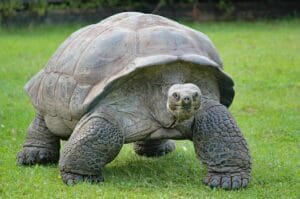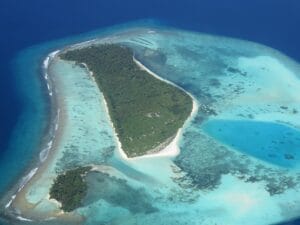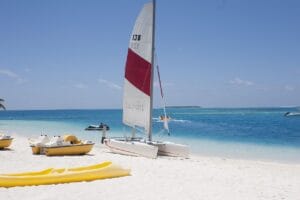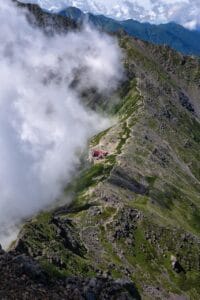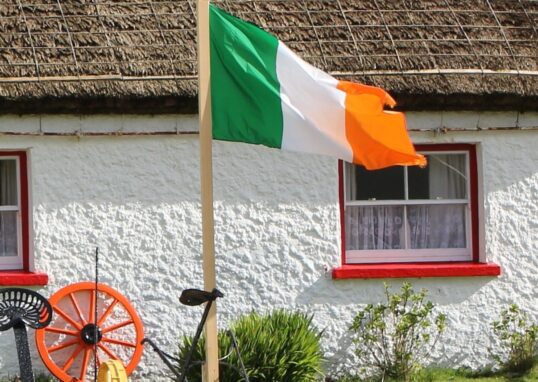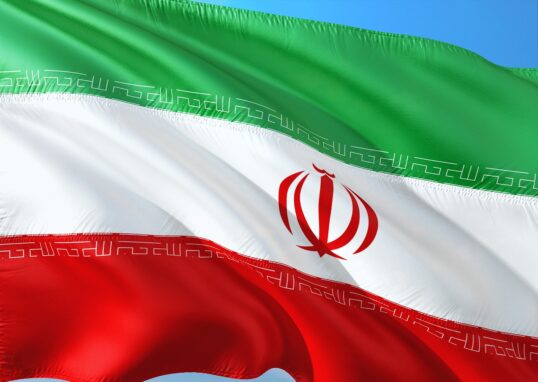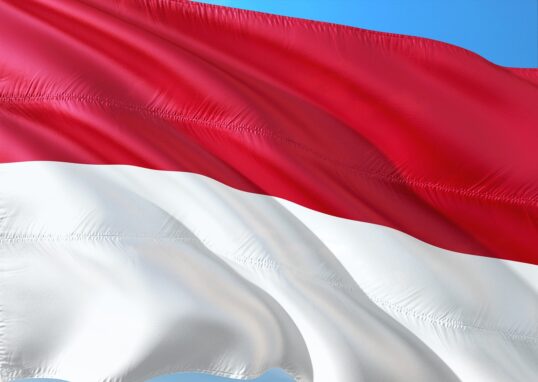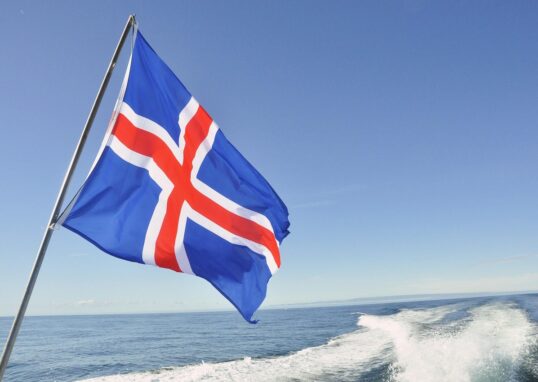
🌊 Aldabra Atoll: A Natural Treasure of the Seychelles
Aldabra Atoll is one of the most special places in the world. It is located in the Indian Ocean, far from the busy cities. Aldabra belongs to the Seychelles, a country made up of many islands. It is not only beautiful but also important for science, nature, and culture. Aldabra Atoll is a UNESCO World Heritage Site. It was declared in 1982. The atoll is often called the “last unspoiled paradise.” This is because it is one of the largest coral atolls in the world, and it has been left almost untouched by humans. In this blog, we will explore Aldabra Atoll in detail. We will look at its history, geography, wildlife, marine life, culture, and how to visit. We will also explore surrounding places that add to the beauty of this remote paradise.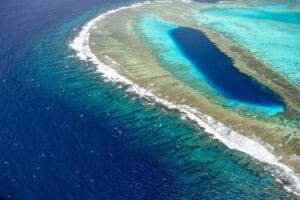
Geography and Location
Aldabra is located in the western part of the Seychelles. It lies about 1,100 kilometers from Mahé, the main island of Seychelles. This distance makes it remote and hard to reach. Because of that, the atoll has stayed wild and natural. Aldabra is made up of four main islands: Grande Terre, Malabar, Polymnie, and Picard. Together, they form a large ring around a shallow lagoon. This lagoon is full of marine life. The whole atoll covers about 155 square kilometers. The atoll has raised coral limestone. This gives it unique landforms like cliffs, caves, and tidal channels. The inner lagoon is shallow and full of channels that open to the sea. The isolation of Aldabra has kept it safe from overdevelopment. Unlike many islands, it has no major cities, no large hotels, and no airports.
History of Aldabra Atoll
The history of Aldabra goes back centuries. The first people to know about it were Arab sailors. They passed by during trade routes across the Indian Ocean. Later, Portuguese sailors recorded it in the 16th century. In the 18th and 19th centuries, Aldabra was used by traders. They came to collect giant tortoises, coconut crabs, and guano (bird droppings used as fertilizer). Sadly, many tortoises were killed during this time. In the 20th century, there were even plans to build a military base on Aldabra. But scientists and conservationists fought to protect it. Their efforts worked, and Aldabra was saved from destruction. Finally, in 1982, UNESCO recognized Aldabra as a World Heritage Site. Since then, it has been strictly protected. Today, only a small number of researchers and rangers live there. Tourists may visit, but visits are limited to protect the environment.
Ecosystems and Landscapes
Aldabra is special because of its ecosystems. Each part of the atoll offers something unique.
- Mangroves grow around the lagoon. They provide shelter for fish and birds. Coral reefs surround the atoll. They are among the richest in the world.
- Seagrass beds inside the lagoon help turtles and fish. Dry scrub and coastal vegetation cover the islands. They survive with little water.
The tidal channels are very impressive. Twice a day, tides rush in and out, creating strong currents. These waters are full of fish, rays, and even sharks. The atoll’s landscapes are dramatic. There are raised limestone cliffs, sandy beaches, and sharp coral rocks.
Unique Wildlife
Aldabra is world-famous for its wildlife.
Aldabra Giant Tortoises
The most famous residents are the Aldabra giant tortoises. Over 100,000 live here. This is the largest population of giant tortoises in the world. They can live for more than 100 years. They walk slowly across the islands, eating plants and grass.
Birds
Aldabra is also a paradise for birds. It has the last remaining population of the Aldabra rail, the only flightless bird in the Indian Ocean. You can also see red-footed boobies, frigatebirds, herons, and flamingos.
Marine Life
The waters around Aldabra are full of life. Sea turtles, including the green turtle and hawksbill turtle, come here to nest. Dolphins, manta rays, and whale sharks also visit. The coral reefs are home to hundreds of fish species.
Other Animals
The atoll also has coconut crabs, the largest land crabs in the world. They can climb trees and crack coconuts with their strong claws.
Plants of Aldabra
The plants of Aldabra have adapted to harsh conditions. Rainfall is low, and the soil is made of coral rock. Still, many plants grow here. Mangroves line the lagoon and tidal channels. Coastal plants such as grasses and salt-tolerant shrubs grow near the beaches. Further inland, dry scrub dominates. Small trees and succulents survive with little water. The plants are important because they provide food and shelter for animals. They also protect the soil from erosion.
Culture and People
Today, Aldabra has no permanent local population. Only a few rangers, scientists, and staff from the Seychelles Islands Foundation live there. But Aldabra is part of the cultural history of the Seychelles. Stories and traditions from the islands include Aldabra’s tortoises and wildlife. For scientists, Aldabra is like a living laboratory. They study climate change, wildlife behavior, and marine ecosystems here.
Visiting Aldabra Atoll
Visiting Aldabra is not easy. Because it is so remote, only small numbers of tourists can go. Most visitors come by cruise ship or on expedition tours. Sometimes yachts visit with special permits. Tourists are not allowed to stay overnight on the atoll. They may only visit during the day.
Activities for visitors include:
- Walking on guided trails. Watching giant tortoises. Snorkeling in the lagoon. Bird watching.
Learning from guides about the ecosystem. The Seychelles Islands Foundation controls all visits. This ensures the atoll stays protected.
Best Time to Visit
The best time to visit Aldabra is between November and April. These months are calmer, with less wind and smoother seas. From May to October, the southeast trade winds blow strongly. This makes access harder. The climate is hot and dry most of the year. Rain is rare. Visitors should carry sun protection and plenty of water.
Conservation Efforts
Aldabra is a success story of conservation. Strict rules protect its wildlife and plants. Fishing, hunting, and collecting are not allowed. Scientists continue to monitor the tortoise population, the health of the reefs, and the impact of climate change. Visitors also help conservation. Fees collected from tours support the Seychelles Islands Foundation.
Surrounding Places and Hotels near Aldabra Atoll
Aldabra Atoll is one of the most remote places in the Seychelles. It is not crowded and has almost no direct tourism. However, travelers who want to see Aldabra usually stay on nearby islands before joining cruises, private yachts, or guided expeditions. These surrounding places provide a mix of culture, history, and natural beauty. They also offer hotels and resorts where guests can relax before or after visiting the atoll.
Surrounding Places to Visit
Assumption Island
Assumption Island is the closest land to Aldabra Atoll. It is only about 30 kilometers away. The island is small, but it has an airstrip. This makes it a key stop for flights bringing researchers, scientists, and limited visitors closer to Aldabra. The island itself has stunning white beaches and turquoise waters. It is quiet and untouched, making it ideal for those who love nature. Visitors sometimes see seabirds, crabs, and colorful shells on the beaches. Though it does not have luxury hotels, Assumption Island is important for anyone traveling to Aldabra.
Astove Atoll
Astove Atoll is another nearby location. It is part of the Outer Islands of Seychelles. Astove is famous for its deep lagoon, which is rich with marine life. Divers love the “Astove Wall,” a dramatic drop that goes from shallow coral reefs into the deep sea. The waters are crystal clear, and the coral is healthy. Sea turtles and reef fish are common here. This atoll has a rustic lodge that offers basic but comfortable stays for divers and explorers.
Cosmoledo Atoll
Cosmoledo Atoll is often called a “diver’s paradise.” It is known for untouched reefs and abundant fish. Cosmoledo is a great spot for fly fishing, snorkeling, and scuba diving. The atoll also attracts bird lovers, as thousands of seabirds nest here. Like Aldabra, it has a wild and untouched feeling. The Cosmoledo Eco Camp, a small eco-friendly camp, is the main place to stay here. It blends comfort with sustainability, offering travelers a closer experience with nature.
Mahé Island
Mahé is far from Aldabra, but it is the main entry point into Seychelles. Most travelers pass through Mahé before continuing to the Outer Islands. Mahé is famous for its beaches like Beau Vallon and Anse Intendance. It also has cultural attractions like Victoria Market, the Botanical Gardens, and the colorful Hindu Temple. Mahé has luxury resorts, boutique hotels, and budget guesthouses. It is the perfect base for arranging cruises or charters to Aldabra.
Praslin Island
Praslin is the second-largest island in Seychelles. It is about 45 kilometers northeast of Mahé. Praslin is known for the Vallée de Mai Nature Reserve, a UNESCO site. This forest is home to the coco de mer palm, which grows the world’s largest nut. Praslin also has stunning beaches like Anse Lazio and Anse Georgette. These beaches are often ranked among the best in the world. For travelers going to Aldabra, Praslin offers a balance of luxury, nature, and culture.
La Digue Island
La Digue is smaller than Mahé and Praslin but very charming. It is famous for Anse Source d’Argent, a beach with pink granite boulders and white sand. La Digue is peaceful, with few cars and many bicycles. Tourists can visit traditional coconut mills, vanilla plantations, and nature reserves. The slow pace makes La Digue a relaxing stop before or after a longer expedition.
Hotels and Resorts Around Aldabra
While Aldabra itself does not have hotels, the surrounding islands and the main Seychelles islands have many options.
Hotels on Astove Atoll
Astove Lodge
- This is a small fishing and diving lodge. It offers simple but comfortable rooms.
- Meals are provided, and guests enjoy fresh seafood. It is ideal for eco-tourism and adventure travelers.
Hotels on Cosmoledo Atoll
Cosmoledo Eco Camp
- Built with sustainability in mind. Guests stay in eco-pods that are stylish and eco-friendly.
- Activities include snorkeling, diving, fishing, and birdwatching. It gives a unique balance of comfort and wilderness.
Hotels on Mahé Island
Mahé has the widest choice of hotels, from luxury resorts to small guesthouses.
Constance Ephélia
- A luxury resort with spacious villas. Offers spa services, pools, and restaurants. Located near Port Launay Marine Park.
Savoy Seychelles Resort & Spa
- Known for its beachfront location at Beau Vallon. Offers fine dining, a large pool, and spa facilities. Popular with honeymooners and families.
Berjaya Beau Vallon Bay Resort
- A more affordable beachfront hotel. Has restaurants, bars, and a casino. Great for budget-conscious travelers.
Hotels on Praslin Island
Constance Lemuria
- Famous for its private beach and golf course. Luxurious villas with private pools. Great for romantic getaways.
Paradise Sun Hotel
- Located on Anse Volbert beach. Offers a mix of comfort and affordability. Family-friendly with activities and excursions.
Hotels on La Digue Island
Le Domaine de L’Orangeraie
- Luxury resort with villas set in tropical gardens. Spa and beachfront dining available.
Chateau St. Cloud
- A boutique hotel located inland. Offers a quiet escape with charming rooms.
Why Aldabra Matters
Aldabra is more than a travel destination. It is a reminder of how nature thrives when humans step back. It shows the importance of conservation. It also gives scientists clues about climate change and biodiversity. For travelers, it offers a chance to see pure, untouched beauty. Few places on Earth remain like this.
Conclusion
Aldabra Atoll is one of Earth’s last natural treasures. It combines beauty, wildlife, and history in a way that no other place can. With its giant tortoises, coral reefs, and remote location, it feels like stepping into another world. Surrounding islands like Mahé, Praslin, and La Digue add more culture and beauty to the journey. Together, they make Seychelles one of the most unique destinations on the planet. A visit to Aldabra is not easy, but it is unforgettable. It teaches us about the value of nature, the power of protection, and the wonder of life in its purest form.

